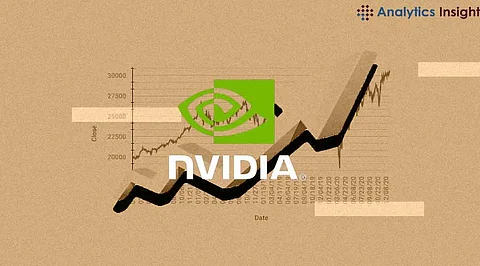

Nvidia Stock Price Analysis: On October 15, 2024, Nvidia's stock (NASDAQ: NVDA) experienced a significant decline, closing at US$131.60, down 6.47 points from the previous close of US$138.07. This represents a 4.69% decrease in value. The drop came after Nvidia hit a record high in the previous session, reflecting a volatile trading period amidst a broader decline in technology and semiconductor stocks.
Nvidia’s stock opened the day at US$137.87, and despite an early attempt to maintain its position, it faced a sharp downturn. The stock reached an intraday high of US$138.57 before falling to an intraday low of US$128.74. The day ended at US$131.60, marking a significant dip from the high it reached earlier in the session.
This decline came as the broader semiconductor industry faced headwinds, with the PHLX Semiconductor Index (SOX) dropping 5.3%, driven by notable losses across major chipmakers like Broadcom (AVGO), Arm Holdings (ARM), and Advanced Micro Devices (AMD). The semiconductor market reacted negatively to earnings reports and forecast cuts from companies like ASML Holding, which fell 16% after an early earnings release warning of weaker sales.
Nvidia, known for its dominant position in the AI chip market, was not immune to the overall selloff in the tech sector on October 15. Despite Nvidia’s strength in artificial intelligence and graphics processing units (GPUs), which have been integral to the growth of AI technologies, the stock faced strong selling pressure.
The decline in Nvidia's stock followed a trend of broader losses in the technology sector. The Nasdaq Composite closed down by 1%, with other major indexes like the S&P 500 and Dow Jones Industrial Average both falling 0.8%. This selloff was attributed to a combination of factors, including corporate earnings reports and investor uncertainty regarding future economic data and interest rate decisions by the Federal Reserve.
Despite the decline, Nvidia remains well above its 52-week low of US$39.23, and not far from its 52-week high of US$140.76, which it achieved recently. The stock’s volatility has been influenced by its central role in the AI revolution and the broader semiconductor industry, which has seen increasing demand for chips used in AI, machine learning, and cloud computing applications.
The trading volume on October 15 was 1,120,742, indicating a high level of activity as investors responded to broader market cues and Nvidia's recent performance. The semiconductor industry has been a focal point for investors, especially with rising concerns about the global supply chain, U.S.-China trade tensions, and the overall macroeconomic outlook affecting technology stocks.
The broader technology sector, particularly semiconductors, has been experiencing fluctuations driven by several key factors:
Earnings Reports: Companies like ASML Holding and Advanced Micro Devices posted earnings that missed market expectations, leading to selloffs in their stocks and negatively impacting related companies, including Nvidia.
Supply Chain and Geopolitical Concerns: The semiconductor industry remains highly sensitive to global supply chain issues and geopolitical tensions, especially between the U.S. and China. These concerns have added pressure to the industry as companies face potential supply disruptions, regulatory hurdles, and changes in demand.
Investor Focus on AI: Nvidia has been a leader in developing AI-focused technology, particularly GPUs that are critical for machine learning and data processing. The company’s leadership in AI chip development has positioned it as a key player in the future of AI and data centers, keeping investors optimistic despite recent volatility.
October 15 saw a decline in major technology stocks, contributing to Nvidia's fall. The market’s attention remains on corporate earnings and macroeconomic data, with investors eagerly awaiting signals from the Federal Reserve on potential interest rate cuts. The yield on 10-year Treasurys stood at 4.03%, down from its previous close of 4.07%, but rising bond yields have been a concern for tech stocks as higher rates tend to decrease the attractiveness of growth-oriented stocks like Nvidia.
While Nvidia has strong fundamentals, driven by its leadership in AI and chips, the current market conditions are challenging, as evidenced by the selloff across the semiconductor industry. Investors are closely monitoring Nvidia’s next moves, particularly as AI technology continues to drive demand for its products.
Nvidia’s stock performance on October 15, 2024, reflects broader industry and market challenges, as the tech sector, particularly semiconductors, faced notable declines. Despite the 4.69% drop, Nvidia remains a key player in the semiconductor and AI markets, and its long-term outlook remains positive due to its strategic positioning in AI technology and GPUs. However, near-term volatility may continue as investors react to broader economic data and earnings reports in the semiconductor industry. The future of Nvidia’s stock price will largely depend on macroeconomic trends, the company’s ability to maintain its leadership in AI, and the overall performance of the technology sector.
